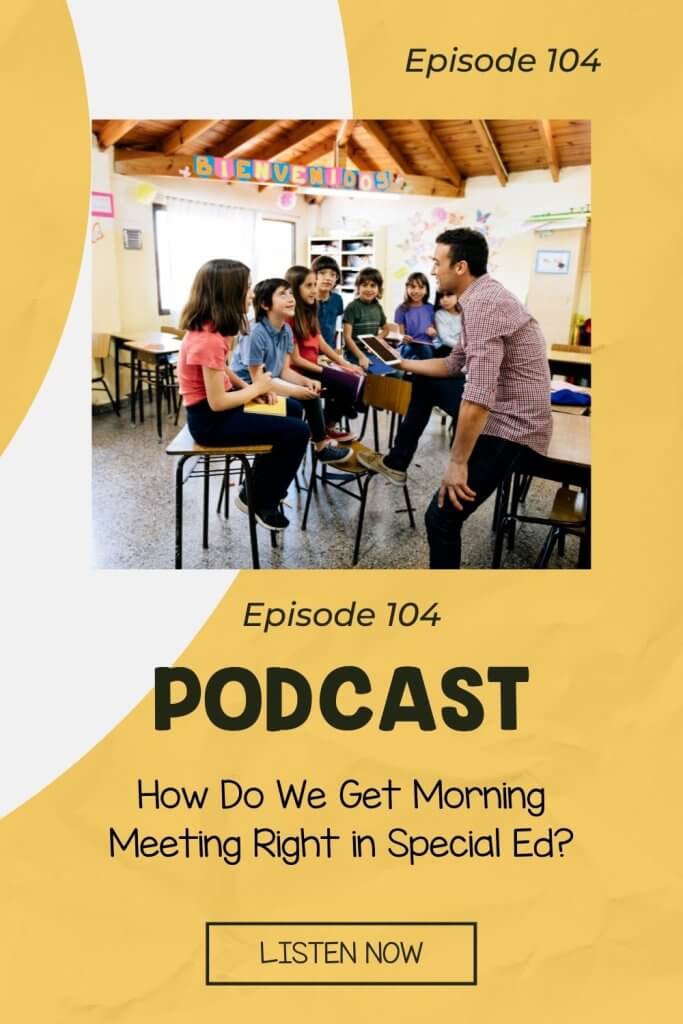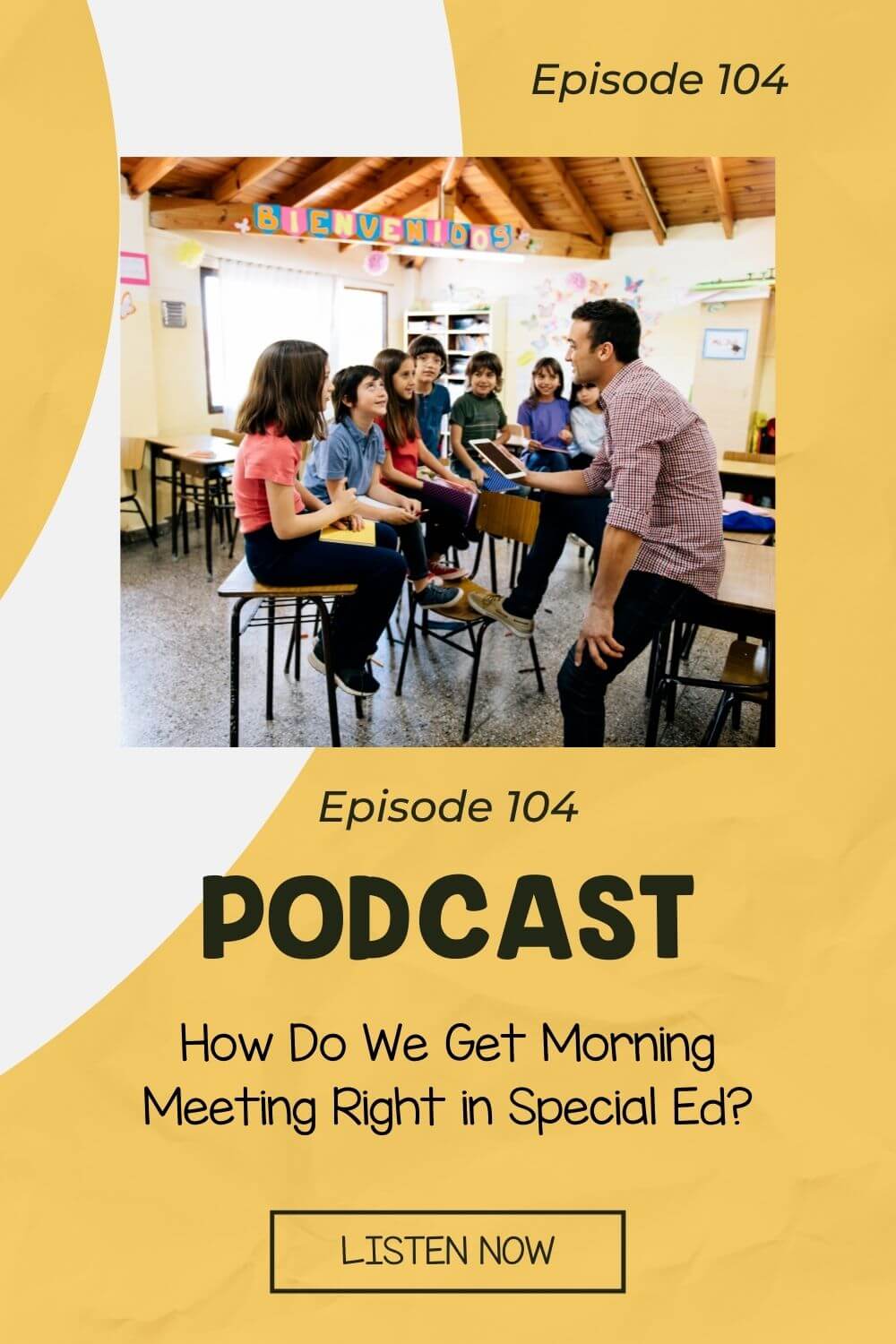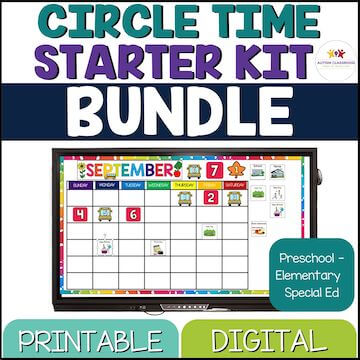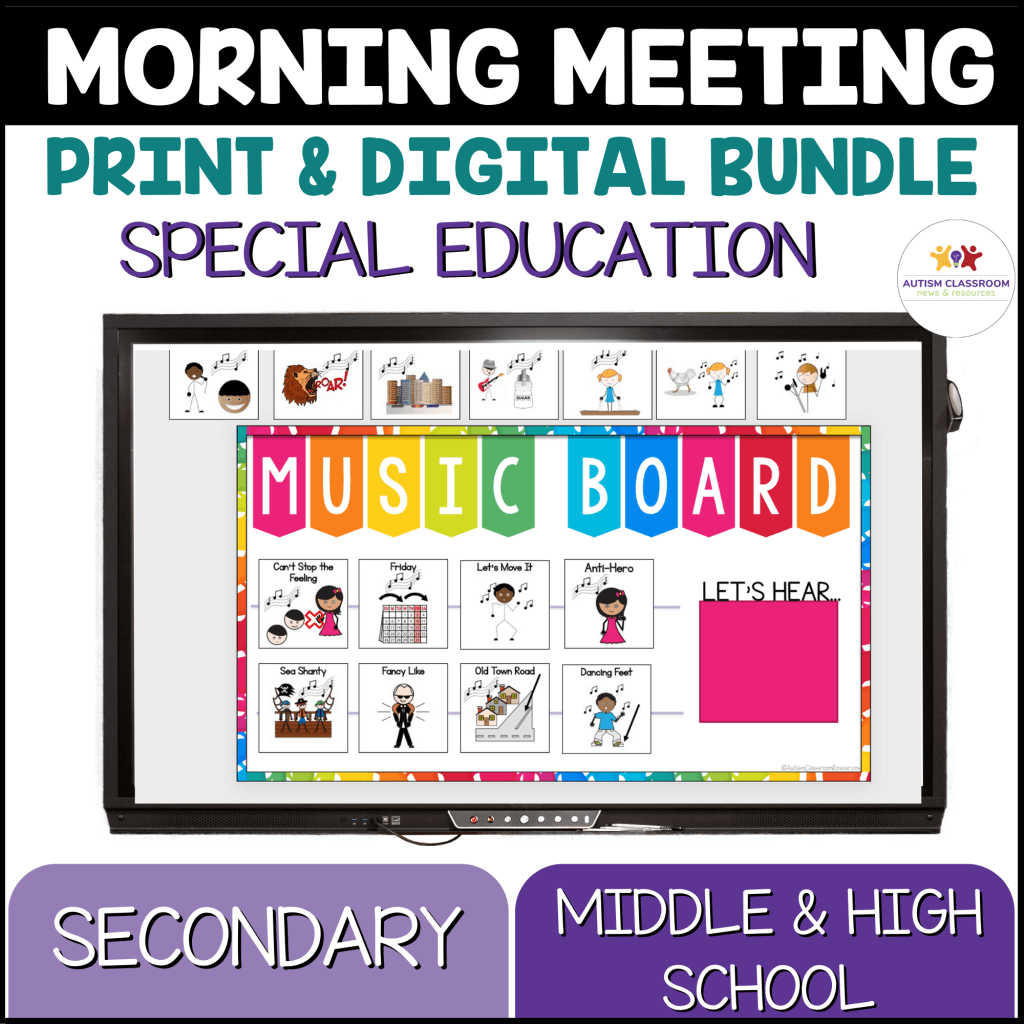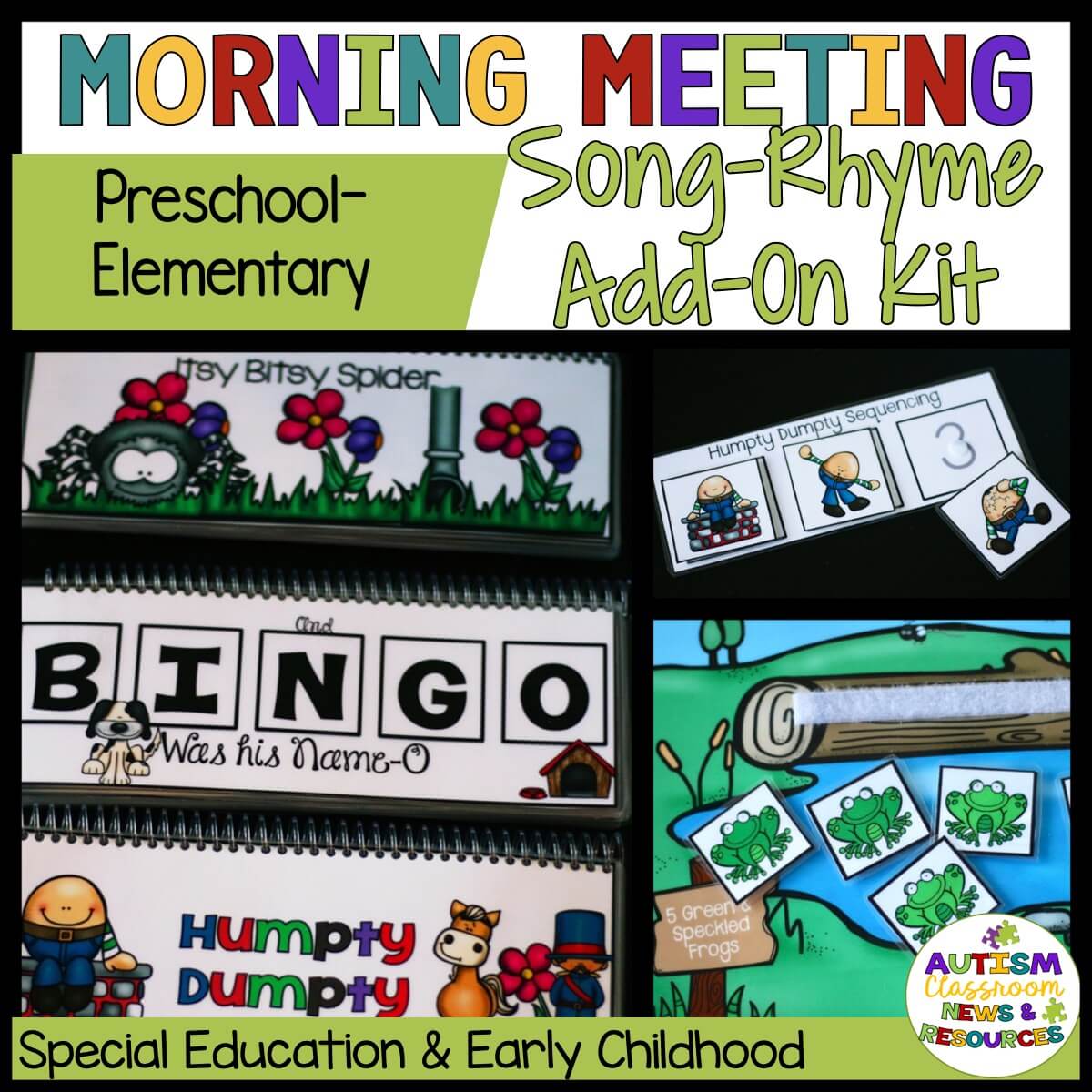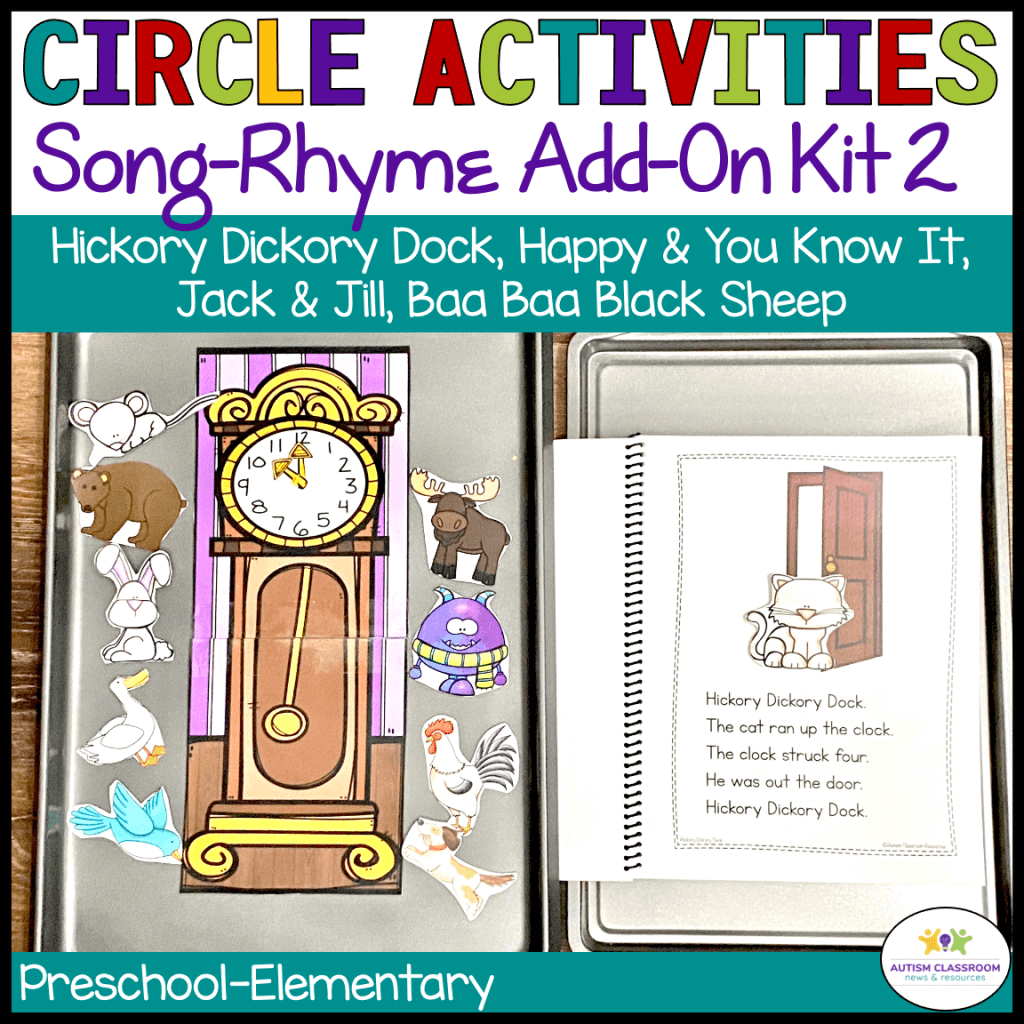Welcome to the Autism Classroom Resources Podcast, the podcast for special educators who are looking for personal and professional development.
Christine Reeve: I’m your host, Dr. Christine Reeve. For more than 20 years, I’ve worn lots of hats in special education but my real love is helping special educators like you. This podcast will give you tips and ways to implement research-based practices in a practical way in your classroom to make your job easier and more effective.
Welcome back to the Autism Classroom Resources Podcast. I am your host, Christine Reeve. I have a confession to make, I used to hate morning meetings, really, I absolutely hated it, I dreaded it. Early-early-early on in my career I thought it was a complete waste of time. I never really saw anybody who was doing it where I thought it was really functional. That was when I was working in preschool. I dreaded the day that anybody asked me to run it. I had no idea what to do in circle time with little kids or in calendar time with older students. I would walk into older classes and see them running a preschool circle which drove me insane. I began to realize that there was a lot that you could do in it and that it was important for a number of reasons. I just didn’t feel like I was any good at making it fun or feel confident at getting the students engaged in it in a way that was interesting.
But when I moved to South Florida, I was extremely fortunate to work with some incredible educators over these years of my career who modeled circle and class meetings of all different kinds for me over the years, and who showed me how amazing this learning time can be if it’s done right. Plus, I’ve had the opportunity to see a lot of group times that haven’t gone so well, some of which I’ve run myself, and figured out what went wrong and why along the road. In today’s episode, I want to talk about group activities and why they aren’t so important and so intimidating for some educators at the same time. I’ll be kicking off a series on group instruction with this episode. There’s more to come from this type of instruction, all the different kinds of instruction and goals that we can fold into this type of instruction, all the way to data collection of strategies that we can use which is also something that’s very difficult with this type of instruction. So stay tuned after this episode for even more about group instruction. But for now, let’s get started.
Let me start by talking a little bit about why these types of group activities are so important for students of all ages. I think we all think of circle when we think of younger students because it’s a way that they learn new skills, they begin to learn to learn within a larger group context. I think that we often don’t negate that circle is important for preschool kinds of kids. I think when we think of kids with autism, sometimes we cut that out of their day because it’s not something they’re good at. But in reality, it is something that they need to learn because there are skills that they need to learn, they need to learn to wait their turn, to follow along with their peers. They need to learn how to learn in a group because that is how instruction looks in the rest of the world. That is preparing them for their next environment is learning in a group, not in one to one or even a small group. They need to learn how to learn when the teacher is presenting to more than just them because that is a huge skill.
For older students, although their typical peers are not engaged in a traditional morning meeting many times, they are engaged in group learning activities. A group learning activity is as critical for our older students for learning in groups as well as it is for our younger students. Why are these group activities important? What are the skills that are important for our students to learn? It’s critical for our students to learn to learn in these types of groups because it’s preparing them for more inclusive environments. One of the things I talk a lot about when I do training is that we should always be thinking for our students about teaching to the next environment. Where are they going after your class, after the next couple classes, in the next couple years? What is the environment that we’re preparing them for? We should always be looking at those environments to see what the skills are that they need.
I’m not talking about academic skills. I’m talking about social behavioral skills. Being able to learn in a group is typically one we should be preparing them for. Raising your hand and waiting to be called on, taking your turn in a group, listening when another student answers a question. Listening and understanding that when the teacher is talking to the other student, she’s also giving information that you need to hear. That is information that many of our students with autism don’t understand. They go, “Well, she wasn’t talking to me so I don’t need to know that. She’s talking to him.” That hidden curriculum is important for them. We’re preparing them for more inclusive environments; learning to attend to that leader in a group, following directions that are given to the group, not specifically to that student. Remaining with the group, that’s a basic skill that even some of our older students need to learn. Understanding that you’re part of a group and you need to stay there, sharing physical space. Learning that this is my space, I need to keep my hands in my space, not over near my peers, out of my chair, out across the table, and things like that. Waiting for my turn, waiting to be called on.
It’s also a really important time where we can work on generalizing the skills that we’ve taught in our smaller groups and our isolation times or our one-to-one times into larger environments, which we have to really program into our days for our students with autism, particularly but for many of our students with disabilities, this is a really key element. It’s also important that we’re teaching it in an age respectful and age relevant manner. This becomes really important when we think about groups for older students. When I say that, I mean that we’re doing it in a way that their chronological age peers would not feel that they’re walking into a classroom that is being taught for kids that are younger than their age or for young baby kids. We want them to walk into a classroom and feel like these are kids that are their age. We want their chronological peers to feel like these kids are the same ages they are and that we’re treating them as the age that they are and exposing them to activities that their same age peers are exposed to. Because that’s how students, all students, you, me, everybody around us, learn leisure skills and culturally relevant and age relevant activities and materials. We learn from hanging out with other kids our age.
Many of our students get stuck on things they learned in preschool because we keep presenting them to them in their class, because they don’t naturally get exposed to other things. It’s great if they still like Barney and they can hang out with Barney at home. They could have it as a reinforcer but that doesn’t mean we should still be presenting it to them when they’re 15 as their group instruction because that’s not age relevant. We should be exposing them to other things. We need to think about that as we think about our classroom activities. That’s a topic for a whole episode by itself someday. But it’s important here particularly because when I talk about morning meetings for middle school and high school, and even later elementary school, I’m not talking about singing Dr. Jean songs as much as I love Dr. Jean because who doesn’t love a really good Tooty Ta? If you don’t know what a Tooty Ta is, go Google it because everybody should know this. A good Dr. Jean song is not really what I want to do with a 15-year-old. They don’t need to be singing The Calendar Song anymore. They need to be working on calendar skills. They need to know how the calendar works and we can work on that but not necessarily with The Calendar Song. Instead, let’s sing Roar by Katy Perry because that’s the way to get them going in the morning.
Let’s talk a little bit about some of the challenges that we face with some of these populations in morning meetings. We have an overlap particularly for students with autism, but many of our students with disabilities, of behavior issues, communication issues, and social issues. Where those three things overlap, that’s where group comes in. The difficulty that they have communicating and understanding others’ communication is a key component in group instruction because it relies so much on communication. Group instruction is socialization. We’re working on socialization. It relies on social skills, we’re teaching social skills, and you need social skills to participate effectively. Deficits in those areas are going to be an area of challenge. Behavior is something that often comes out during this issue. Behavioral issues often come out during this time because we’re challenging those two other areas that are really hard. We’re challenging them so it’s a harder time for them. We get the stimulus over selectivity that a lot of our students have where they don’t know the elements to pick up on.
The difficulty in participating in large group activities, the communication and social deficits, all of that come together in a perfect storm in group activities, and that is one of the reasons why these are really challenging for some of our students. That’s why we have to learn to really break them down, focus on specific skills that we want to teach, and teach those skills. That’s really what we’re going to focus on as we go through this series of episodes of podcasts because you know, I like a good series.
As we think about it, these are some of the challenges that are presented by group activities to us, as educators. One is that there’s a wide variability of skills in our classrooms. Special Ed classrooms are notorious for having a wide range of grades as well as a wide range of skills of our students. That means that there’s a huge amount of differentiation; from students who can read to students who can’t read, from students who are verbal to students who are not, from students who are independent at being able to maintain themselves in group to students who need somebody sitting by them, and keeping them engaged, from students who can stay in a group for 30 minutes to a student who can stay for five. We have to make a plan for how to differentiate among those students. Challenging behavior. Because we’re challenging their social and communication skills, we often see more challenging behavior in group activities. We have to have a plan for how we’re going to manage that. Sometimes that is related to their ability to be successful enough for us to differentiate successfully. Those two things are going to go together.
Our students require specialized materials to be successful in group activities, whether they are group activities in our special ed classroom or group activities in another classroom. Our students need us to develop material manipulatives, response cards, and I’ll be talking about some of those visual supports, some of those instructional supports that we can put together to help them be more successful; communication tools and things like that. We’ll focus on some of those in an episode.
Staff support, time training and collaboration, making sure that the staff is on the same page, knowing what the targets are that we’re trying to work on, understanding that the student may not stay as long as that student is in this group activity, knowing that we’re working this student being independent at the skill but that student isn’t independent yet. So making sure that we’re all working on our same skills in these areas. Data collection; we will do a whole episode on ways to collect data when we’re trying to run a group activity and support all these differentiated skills and still making sure that we’re getting the data that we need. I will share some strategies for that in an episode as well. Those are all the challenges that we are going to be looking at in our series of episodes. As you can tell, I can go on and on about morning meetings and teaching group activities and that’s what I’m going to do. We’ll talk about choosing the skills that we’re targeting to teach, how we can use visual supports to support our instruction and reduce challenging behaviors, ways that we can set up to teach communication skills within groups for good generalization, instructional strategies that support learning and group time, and how we can adjust common group activities to work for all students, and how we can take and manage taking data for all of this because you have to get credit for all of the amazing teaching that you are doing.
Now, I’ve got some blog posts that I’ve written over the years that have some helpful hints on morning meetings to get you started. I’m going to point you toward those in the post for this episode. Hop over to autismclassroomresources.com/episode104, and if you need a little bit more support, and who wouldn’t? Hop over to our free Facebook group at specialeducatorsconnection.com and ask to join. If you’d like a little bit more intensive support from me, we actually have a number of resources focused on group activities, focused on different kinds of morning meetings in our Special Educator Academy. So come try us out with a seven-day free trial, specialeducatoracademy.com and get your new year off to an amazing start. Don’t be an island, start off your year with support, and feel confident about your teaching. I hope you’ll come back next week for another episode on morning meetings. Until then, I’ll just be sitting here singing the Tooty Ta to myself because we all know that I’m not getting that out of my head anytime soon. Sorry, not sorry.
